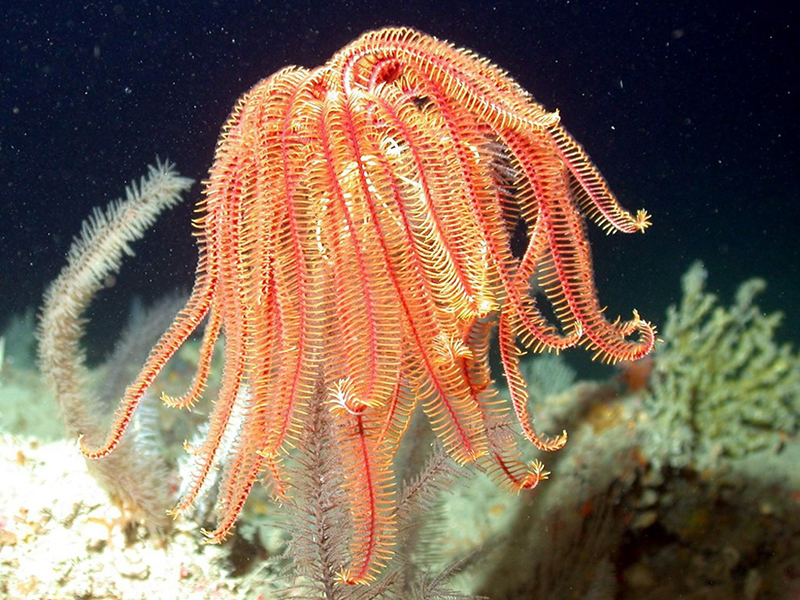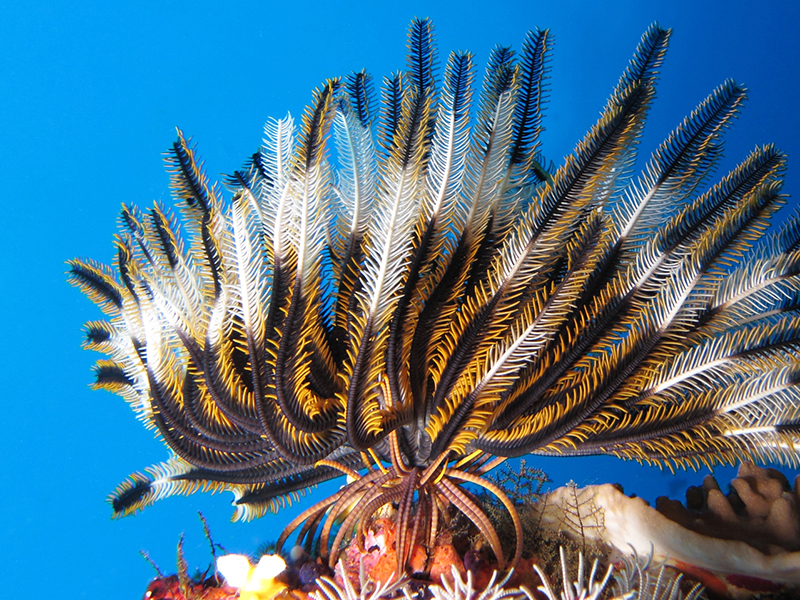
The 10 oldest species on earth have one thing in common: they live underwater. Sponges hold the record, having survived more than 600 million years. Other species that have been around for more than 500 million years include comb jellyfish, horseshoe crabs and chambered nautilus are close behind. Coming in next is a group of animals that showed up around 490 million years ago and dominated ocean floors for the next 200 million years.

We are talking about crinoids, which is the Latin phrase meaning lily-like. And it's an apt description for a group of animals that can have a very flower-like look. A marine biologist would refer to crinoids as echinoids, a group that also includes more modern relatives such as starfish, sea urchins, and sand dollars. During the age of dinosaurs, there were more than 6,000 known species of crinoids, some of which grew to lengths of 100 feet and more. Today, there are some 600 surviving species.

Crinoids can be found anywhere from shallow reefs to ocean floors five miles down. The deep-water species are known as sea lilies as they typically have a stem-like body, while the shallow-water dwellers that divers will encounter on coral reefs around the world are usually known as feather stars.
The feathery five-fold appendages of a crinoid are used to trap and harvest plankton and other floating nutrients. Unlike a sponge which has a built-in water pump, crinoids depend on currents to bring a meal their way. That's why you are likely to see one perched on a rock or on the tip of a sponge that's exposed to the currents. And yes, most species of crinoids can move about either by free floating or by walking on their short legs.

The average diver might not pay attention to crinoids — assuming they even recognize one as something other than a type of fancy soft coral. But once you know what to look for, crinoid hunting can become a fascinating addition to your underwater explorations.